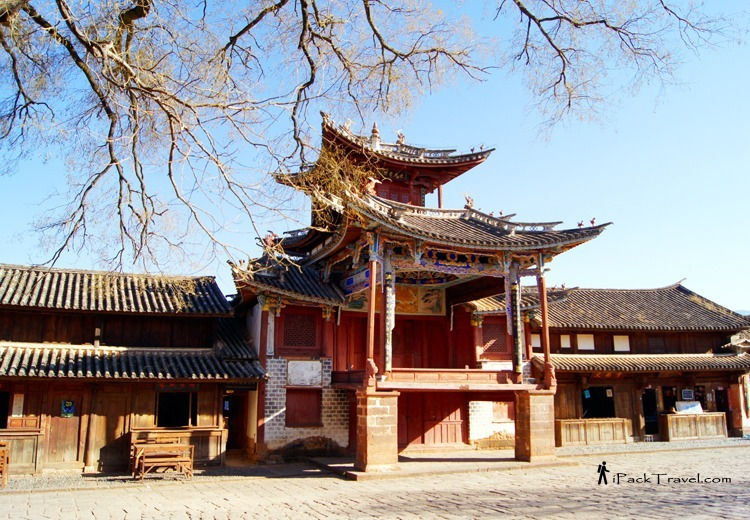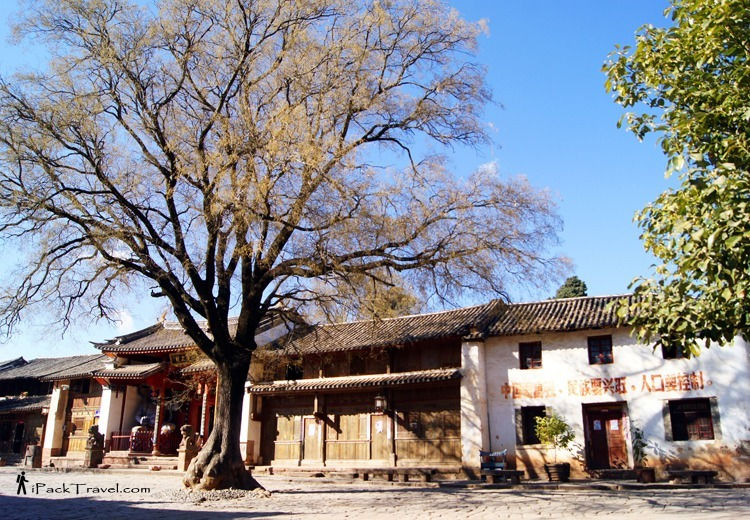
Sights: Shaxi Ancient Town (沙溪古镇)
Region: Jianchuan County, Dali Bai Autonomous Prefecture, Yunnan
注:云南.大理白族自治州.剑川县
Previous story:
Shaxi Ancient Town is another well-preserved town in Yunnan and has a history that can be traced back to 2,400 years ago. The ancient town was an important trading hub along the Ancient Tea-Horse Trail (茶马古道). Due to the lack of major commercial development, the town's ancient bazaar (古集市) has been kept alive till this day and is a major feature of the ancient town.
The ancient bazaar is the last surviving one along the Ancient Tea-Horse Trail — I will cover the ancient bazaar in a follow-up story.
Getting From Lijiang to Shaxi Ancient Town
Shaxi Ancient Town is about 100Km from Lijiang City but 140Km from Dali City. It was shorter to travel from Lijiang.
From Dayan Ancient Town in Lijiang City, we took a bus to a bus terminal in Jianchuan County (剑川县), Dali, and switched to a mini-bus for Shaxi Ancient Town. The mini-bus would depart when it was more than half full. The whole journey took about 3 hours.
Where I Stayed
Xiaoqi, whom I got to know in Shangri-La, and I lodged at Horse Pen 46 Youth Hostel (沙溪马圈46国际青年旅舍). It was located right beside the ancient stage of Shaxi Ancient Town.

We holed up in the ancient town for 11 days — most of the time idling and enjoying the cool weather here. The hostel staff were almost like a family to us. We would dine together and sit around a fire stove to keep ourselves warm in the cold nights.

We also celebrated New Year's eve for 2013 with a yak meat hotpot dinner in the hostel. Two days later, we continued on our journey.
A Walk Around Town
Right outside the youth hostel was Sideng Square Street (寺登四方街), part of Sideng Street (寺登街), an ancient district with several cultural heritage. The heritage included the ancient stage (古戏台), ancient Buddhist Xingjiao Temple (兴教寺), ancient Yujin Bridge (玉津桥) outside the town and two ancient village gates. All were still intact over the years.
The stage, temple and buildings were arranged around Square Street with two old trees standing in it. This was the ancient stage with exquisite decorations. It was very well-preserved.


Opposite the stage were some administrative buildings and Xingjiao Temple, which was China's largest, most traditional and most significant Buddhist temple and the most well-preserved. We visited the temple but I refrained from taking any photos inside the religious compound.


And some photos of Sideng Square Street during a night photo shoot when everyone was "hugging" the fire stoves in their homes.



There were cafes and gift shops around the square too. During winter and non-market days, the ancient town was very quiet and most shops would not be opened. The town would come to life on Fridays — the market days.

One of the ancient village gate, the East Gate (东寨门) was standing just behind the ancient stage. It was constructed from red sand.

And Yujin Bridge was just a short distance from the gate. (I will put up a separate story on the scenery outside the town as this post has quite a number of photos.)


We also checked out the residential areas in the ancient town. The buildings were mostly of Bai traditional architecture and handiwork (白族建造技艺). In 2001, the ancient town was listed in the protection list of endangered sites by the World Monuments Fund (WMF).

These two buildings had a common archway entrance but it seemed abandoned.

There were many such trees with oranges but no leaves. They added colourful touches to the beautiful scenery around Shaxi Ancient Town.

This household made rushan (乳扇), a Bai-minority specialty snack, by drying flattened pieces of milk-cheese under the sun. The milk-cheese are usually lightly grilled before serving (烤乳扇).

Read also:
These bronze sculptures with three scriptures behind was located along the road leading to Shaxi Ancient Town's newer section. We actually alighted from the mini-bus at this spot earlier.

One of the scriptures, "茶马古道上唯一幸存的古集市", highlighted the importance of Shaxi Ancient Town as the only surviving ancient bazaar on the Ancient Tea-Horse Trail.
Noticed the emphasis on the ancient bazaar in Shaxi Ancient Town? Yet I didn't show a single photo of the bazaar. That's because the ancient bazaar was not a physical structure by itself! It would materialise only on market days.
Next story:
Comentarios